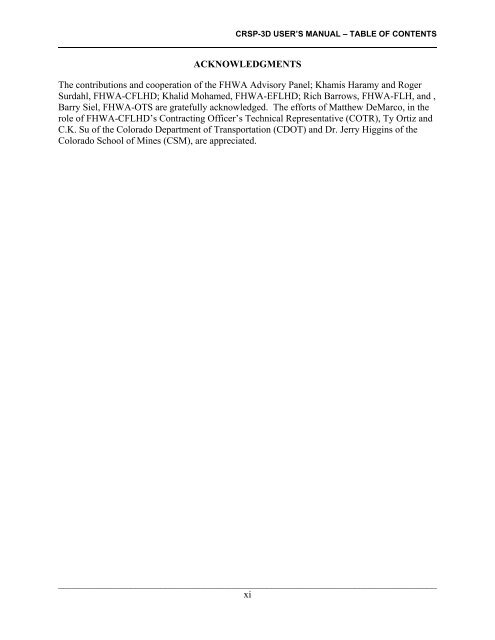Colorado Rockfall Simulation Program
Drivers & Downloads. Your Canon account is the way to get the most personalized support resources for your products. Canon drivers for windows 10 64 bit.

Colorado Transportation Institute, Colorado Department of Transportation, 2000 - Calibration - 127 pages 0 Reviews This rockfall computer program, which simulates rocks tumbling down a slope, predicts the statistical distribution of speed and bounce height and can be used for locating and designing rockfall mitigation. With advances in its development, Colorado Rockfall Simulation Program (CRSP) has been successfully applied to many scientific and engineering issues. The CRSP was developed for the purpose of modeling rockfall behavior and to provide a statistical analysis of probable rockfall events.


RocFall is a 2D statistical analysis program designed to assist with assessment of slopes at risk for rockfalls. Energy, velocity and 'bounce height' envelopes for the entire slope are determined by the program, as is the location of rock endpoints. Distributions of energy, velocity and bounce height are also calculated along the slope profile. MI-66 Colorado Rockfall Simulation Program, Version 4.0 $ 0.00 Add to cart. OF-09-01 Geologic Hazards Mapping Project of the Uncompahgre River Valley Area, Montrose County, Colorado $ 0.00 Add to cart. IS-05 Geologic Hazards in the Crested Butte-Gunnison Area, Gunnison County, Colorado. The Colorado Rockfall Simulation Program (CRSP) was devel oped to provide a statistical analysis of probable rockfall behavior at any given site and to be used as a tool to study the behavior of rockfalls, to determine the need for rockfall mitigation, and to aid in the design of rockfall mitigation.
Colorado Rockfall Simulation Program Version 5
The Colorado Rockfall Simulation Program (CRSP) was developed to provide a statistical analysis of probable rockfall behavior at any given site and to be used as a tool to study the behavior of rockfalls, to determine the need for rockfall mitigation, and to aid in the design of rockfall mitigation. The basic theory behind CRSP is summarized, and the results of recent program modifications and calibration are discussed. CRSP uses numerical input values assigned to slope and rock properties to model rockfall behavior. The model applies equations of gravitational acceleration and conservation of energy to describe the motion of the rock. Empirically derived functions relating velocity, friction, and material properties are used to model the dynamic interaction of the rock and slope. The statistical variation among rockfalls is modeled by randomly varying the angle at which a rock impacts the slope within limits set by rock size and slope irregularities. The program provides estimates of probable velocity and bounce height at various locations on a slope. Experimental verification and calibration of CRSP was conducted by analyzing videotapes of rocks traveling down a slope. A comparison of rock velocity and bounce height obtained from the tapes with CRSP prediction indicates reasonable agreement. Also, an evalution of the sensitivity of input parameters indicates that slope angle and surface roughness are the most important parameters on steep slopes. Design graphs are developed based on CRSP simulations by using surface roughness and slope angle to estimate rock velocity and bounce height on uniform slopes.
- Record URL:
- http://onlinepubs.trb.org/Onlinepubs/trr/1990/1288/1288-014.pdf
- Record URL:
- https://scholar.google.com/scholar_lookup?title=ROCKFALL+HAZARD+ANALYSIS+USING+THE+COLORADO+ROCKFALL+SIMULATION+PROGRAM&author=T.+Pfeiffer&author=J.+Higgins&publication_year=1990
- Availability:
- Find a library where document is available. Order URL: http://worldcat.org/isbn/0309050642
- Supplemental Notes:
- This paper appears in Transportation Research Record No. 1288, Geotechnical Engineering 1990. Distribution, posting, or copying of this PDF is strictly prohibited without written permission of the Transportation Research Board of the National Academy of Sciences. Unless otherwise indicated, all materials in this PDF are copyrighted by the National Academy of Sciences. Copyright © National Academy of Sciences. All rights reserved
- Authors:
- Pfeiffer, Timothy J
- Higgins, Jerry D
- Publication Date: 1990
Media Info
- Features: Figures; Photos; References; Tables;
- Pagination: p. 117-126
- Monograph Title: Geotechnical engineering 1990 - soils, geology and foundations
- Serial:
- Issue Number: 1288
- Publisher: Transportation Research Board
- ISSN: 0361-1981
Subject/Index Terms
- TRT Terms: Acceleration (Mechanics); Angularity; Calibration; Design; Dynamics; Elasticity (Mechanics); Energy conservation; Equations; Forecasting; Friction; Gravitation; Hazards; Impact; Properties of materials; Rock mechanics; Rockfalls; Roughness; Simulation; Slopes; Statistical analysis; Traffic mitigation; Velocity; Videotapes
- Uncontrolled Terms: Bounce; Impact angle; Mitigation; Verification
- Old TRIS Terms: Angles, geometry; Gravitational acceleration
- Subject Areas: Data and Information Technology; Design; Energy; Environment; Geotechnology; Highways; Materials; I43: Rock Mechanics;
Filing Info

Colorado Rockfall Simulation Program 3d
- Accession Number: 00607757
- Record Type: Publication
- ISBN: 0309050642
- Files: TRIS, TRB, ATRI
- Created Date: Apr 30 1991 12:00AM